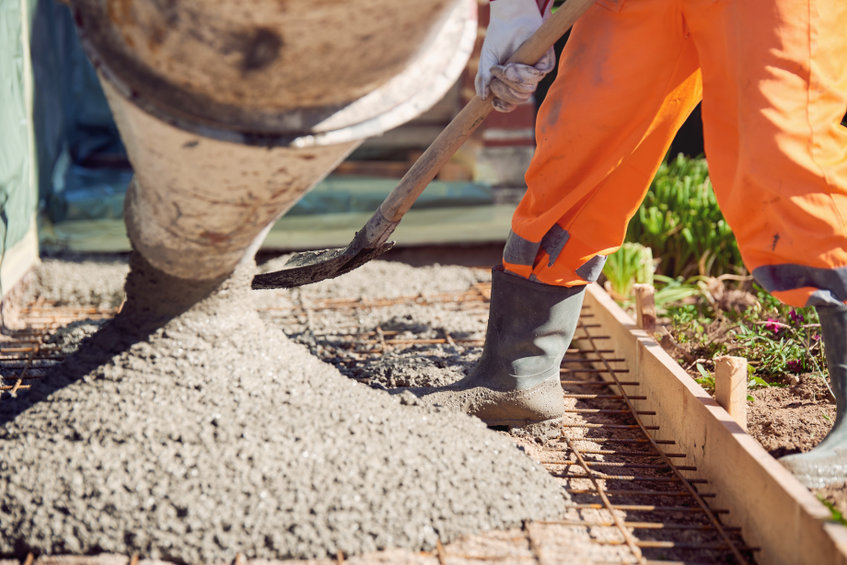
You can’t rush concrete. Even though concrete is a common and durable substance, it needs to be poured under the best of circumstances for it to maintain its integrity and strength. We’re at the mercy of the weather for a lot of things, and concrete work is no exception.
Cold weather can be challenging when pouring concrete for a variety of ways. If the newly poured concrete happens to freeze before it adequately hardens, it may result in irreparable damage. We estimate that about half of the concrete’s intended strength is lost if freezing happens during the setting process. Additionally, if the ground is frozen, this can create other problems. This can increase the setting time, and if the ground thaws and repositions, the concrete can shift and crack. If there is snow or ice present, this can also lead to more issues. Laying concrete on too much moisture is never a good idea and will impact the curing process resulting in a weaker final product. It is still okay to pour concrete in the winter months as long as you ensure it won’t freeze during the first 24 hours and that you take the necessary precautions to ensure a quality pour. Lift Right Concrete follows the weather closely to make sure every pour is safe from freezing or getting damaged from snow, ice, or moisture.
There is a time when it’s too hot to pour concrete. Hot weather increases the evaporation of moisture on the newly poured surface which will accelerate the curing time. You don’t want the surface water to complete dry out or for the concrete to get too hot too fast because this can result in cracking. Also, drastic changes in temperature (such as cooling down greatly at night) can cause thermal cracking and shrinking. This will result in a reduction of the concrete’s ultimate strength. Concrete projects should wait until days that are cooler than 100 degrees. If that’s not possible, at least tackle the project in the early mornings or late evenings while being mindful and prepared for the rising temperatures.
We recommend working with concrete in temperatures between about 40 degrees and 70 degrees. Our team has worked in Utah for many years and understands the needs of concrete in our constantly fluctuating temperatures. We ensure the concrete poured at our jobs is done at the optimal time and with the right tools and resources.
If you have any unlevel concrete, cracked areas, sunken sections that have created tripping hazards, or any other concerns, be sure to address them right away. These issues only get worse over time, and you definitely don’t want anyone to trip and fall on your property due to concrete issues. It may be freezing in Utah right now but that doesn’t mean we’re not working. We have the tools and knowledge to know when and how to lay concrete and fix issues any time of the year.